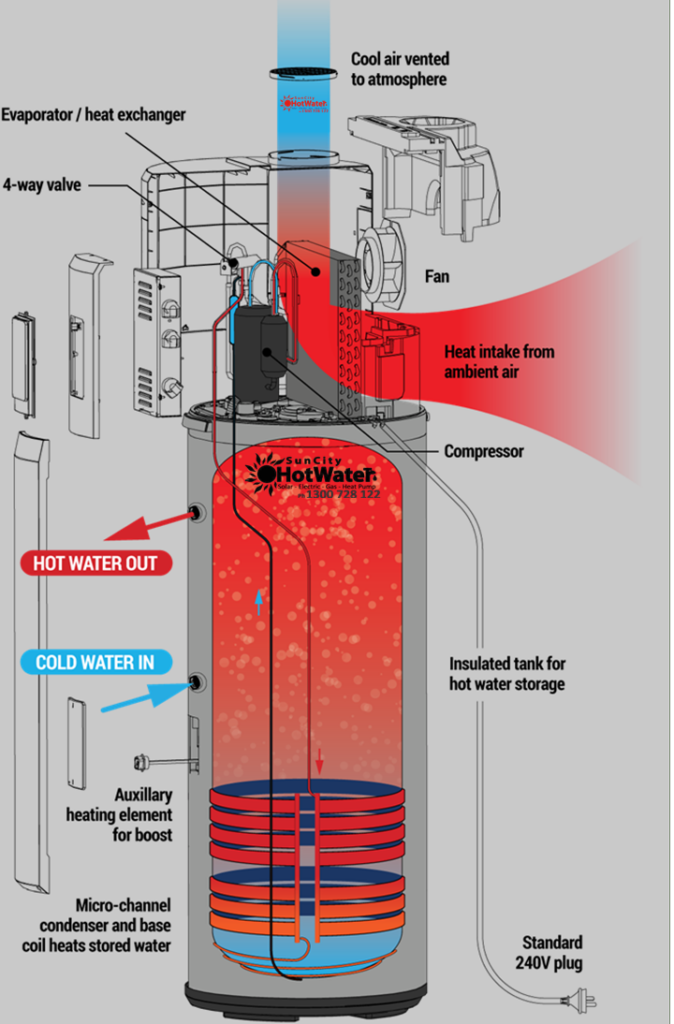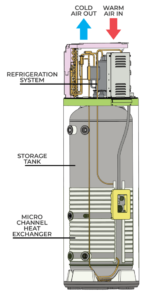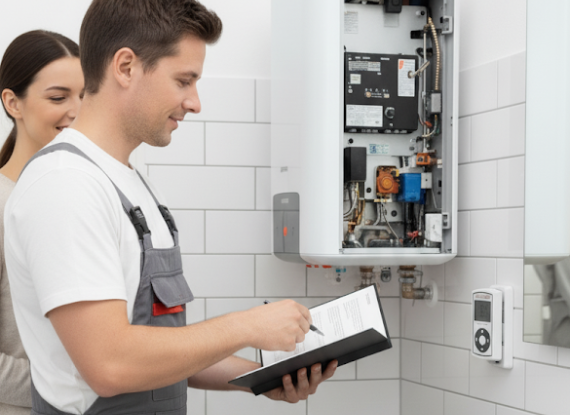North Lakes Hot Water describes how heat pumps operate through a sequence of stages that make them very efficient at heating water.
First, a liquid refrigerant flows into an evaporator where it draws heat from the surrounding air and vaporises into a gas.
That gas is then squeezed by an electric compressor, raising its temperature so it becomes hotter than the water in the storage tank.
The heated gas moves into a condenser, where it transfers its warmth to the water and condenses back into a liquid.
The liquid then passes through an expansion valve, which reduces its pressure and cools it before returning to the evaporator to begin the cycle again.
Electricity powers the compressor and fan, but unlike conventional electric hot water systems that directly heat water, a heat pump moves heat from the air into the water. This allows it to deliver far more heat energy for the same electrical input. Performance is influenced by ambient air temperature — when the air is warmer than the refrigerant, heat transfer is straightforward. In cooler conditions the efficiency falls, though many modern units are engineered to work in sub-zero temperatures. Some models can even be installed indoors, for example in ventilated garages, with correct clearances and airflow.
To keep the evaporator absorbing heat effectively, a constant supply of fresh air is required. An integrated fan draws in air and expels the cooled air back outside.
Heat pump water heaters come in two primary configurations.
Integrated (compact) units house the compressor and storage tank together in one assembly.
Split systems separate the tank and compressor — much like a split air conditioner — and link them with refrigerant lines.
As your local North Lakes plumber for hot water systems, North Lakes Hot Water can advise on installation, repairs and whether a gas and electric or heat pump option best suits your home.






